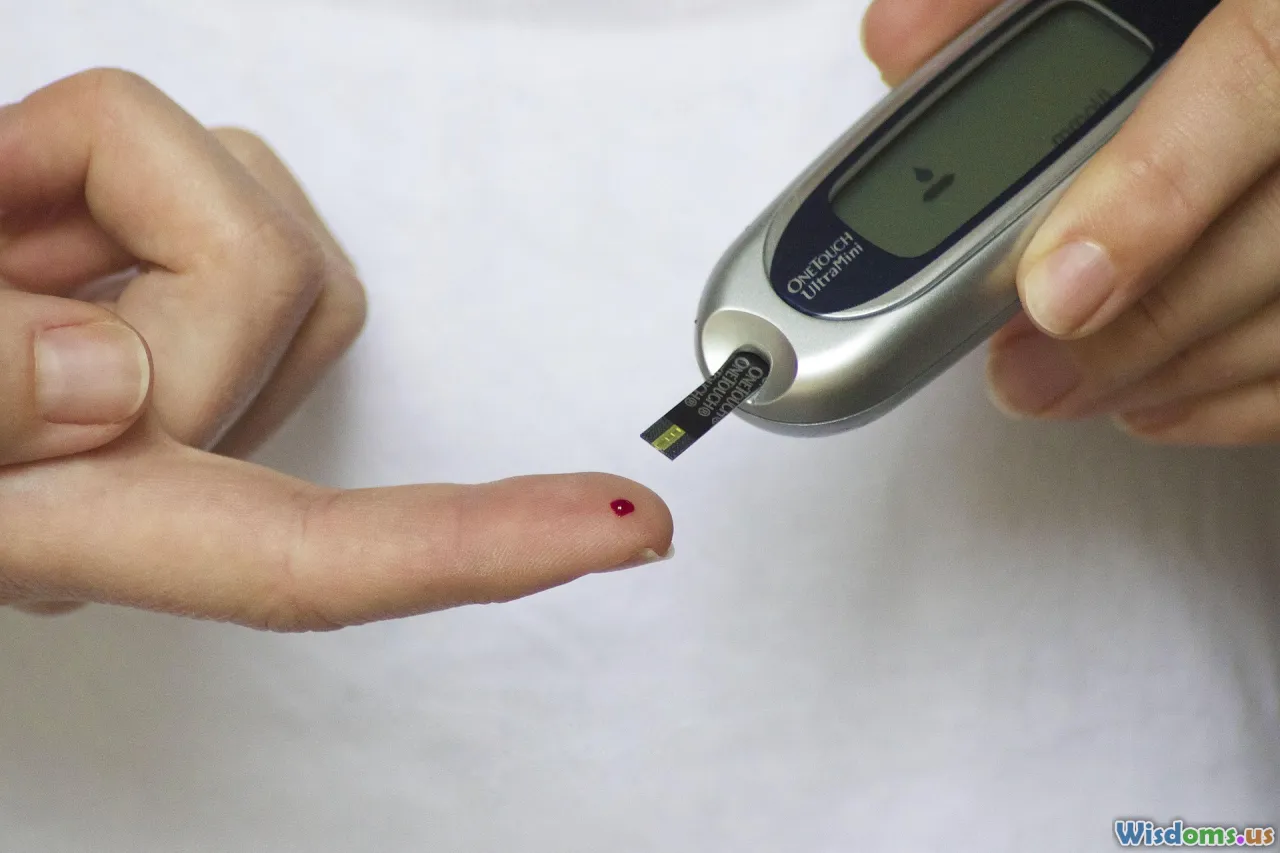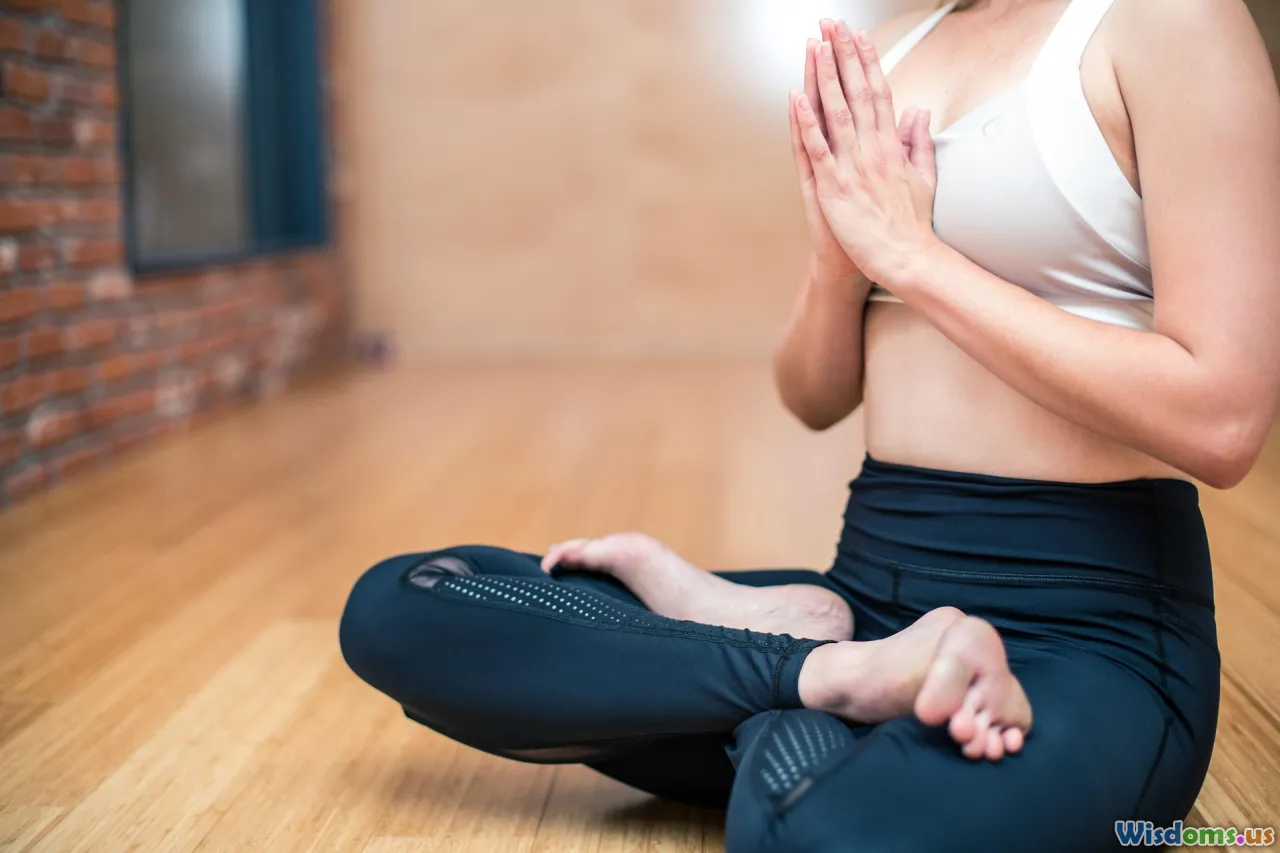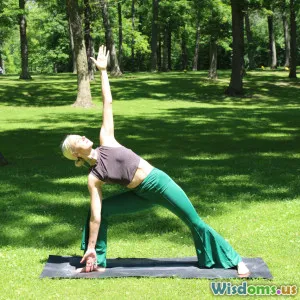
Can Walking Thirty Minutes a Day Actually Change Your Body
15 min read Discover how walking 30 minutes daily can transform your body, boost health, and enhance well-being, supported by science and expert recommendations. (0 Reviews)
Can Walking Thirty Minutes a Day Actually Change Your Body?
The idea that a simple, low-impact activity like walking can lead to meaningful changes in your health and physique may seem almost too good to be true. In a world obsessed with high-intensity workouts and trendy fitness routines, walking comes across as, well, pedestrian. But science and real-life stories increasingly highlight the profound impact that a daily 30-minute walk can have—not just on your physical appearance, but also on your internal health, mindset, and longevity. Let’s delve into what happens when you commit to walking for half an hour daily, exploring the transformative effects on your body and well-being.
Unlocking The Power of Consistency: The Science Behind Daily Walking
Consistency is the secret sauce behind all fitness results, and walking is arguably the most accessible activity for sustained commitment. According to the Centers for Disease Control and Prevention (CDC), adults should aim for at least 150 minutes of moderate-intensity aerobic activity per week. Splitting this into 30-minute walks over five days meets and even exceeds this goal.
What Does 30 Minutes of Walking Do?
A brisk, 30-minute walk typically covers between 2,500 and 4,000 steps (about 1.5–2.5 miles), depending on pace. In this timeframe, most people burn approximately 100–200 calories. Over time, this modest daily expenditure adds up: multiply by seven days, and you could be burning an additional 700–1,400 calories per week—equivalent to 0.2–0.4 pounds of weight loss, assuming no other dietary changes.
But the effects of walking extend far beyond mere calorie burning. During a steady walk, your heart rate elevates, increasing circulation and oxygen delivery to your muscles, which aids in overall cardiovascular health. Consistent movement promotes cellular adaptations: improved mitochondrial function, lower blood pressure, and even improved insulin sensitivity, according to studies from Harvard Medical School.
Real-World Impact: Numbers Tell the Story
Consider the famous NHS "Couch to 5K" program, which encourages people to begin with brisk walks if they’re new to exercise. Many participants report substantial improvements in fitness and mental health within weeks. In a Stanford University study comparing walking to more strenuous exercises, those who walked regularly enjoyed similar reductions in health risks, underscoring walking’s potential for meaningful change.
How Does Walking Transform Your Body Composition?

When people ask if walking can really change their body, they’re often envisioning weight loss, leaner physique, and visible fitness improvements. Walking—while less intense than running or HIIT—can make surprising contributions here, especially over time.
Fat Reduction and Weight Management
Though walking is not the fastest way to burn calories, its sustainability is its strength. A study published in the Journal of Exercise Nutrition & Biochemistry (2014) followed overweight women who walked 50–70 minutes three times a week. After 12 weeks, participants lost an average of 1.6% body fat and 1.8 kilograms (almost 4 pounds). Those who upped their frequency or mileage noted more dramatic losses.
Muscle Tone and Posture
Walking mainly works your legs—targeting the quadriceps, hamstrings, glutes, and calves—but also activates your core for stability. Swinging your arms briskly can strengthen your shoulders and upper back. Many experience greater muscle definition and improved posture, as regular walking strengthens the spinal muscles, core, and pelvic region. If you add inclines (hills or stairs), you recruit even more muscles, amplifying benefits.
Waistline Wonders
Surprisingly, walking is linked with decreases in visceral fat (dangerous fat around abdominal organs). Harvard researchers observed that those who walk briskly for 30–60 minutes a day have a measurable reduction in waist circumference, regardless of significant weight loss. In other words: while the scale may move slowly, your body could be shrinking inches where it matters most for health.
Walking's Hidden Internal Benefits: What You Can't See

While changes to your exterior can be motivational, some of walking’s greatest gifts occur beneath the surface.
Heart Health
Regular brisk walking lowers your risk of coronary heart disease by 19%, as shown by a 2013 meta-analysis published in the journal Arteriosclerosis and Thrombosis. Even seven-minute increments of walking—added up throughout the day—improve blood pressure, lower LDL (“bad”) cholesterol, and elevate HDL (“good”) cholesterol. For individuals with or at risk for hypertension, this is an actionable daily tool to manage heart health.
Blood Sugar and Diabetes Prevention
After meals, going for a 30-minute walk greatly improves blood sugar control. A 2016 study out of New Zealand tracked prediabetic individuals, demonstrating that post-meal walks three times a day were significantly more effective at lowering blood glucose than a single 45-minute morning walk. This means the timing of your walk may amplify its effects on your metabolism and long-term disease prevention.
Mental Health and Cognitive Function
Walking triggers the release of neurochemicals like endorphins and dopamine—improving mood, reducing anxiety, and warding off depression. In older adults, walking is strongly correlated with lower rates of cognitive decline and a reduced risk of Alzheimer’s. According to the National Institute on Aging, 30 daily minutes appears to offer substantial neuroprotective effects, likely due to improved circulation and decreased inflammation in the brain.
Walking for Longevity: How Your Daily Stroll Adds Years to Your Life

It’s not just about the years in your life, but the life in your years. Numerous studies have tracked large groups over decades, showing that walking just 30 minutes per day can extend lifespan.
In a sweeping follow-up of over 400,000 adults (published in The Lancet, 2011), researchers found that even those walking just 15 minutes daily lived, on average, three years longer than non-walkers. Additional walking, up to 30–60 minutes, was associated with even lower rates of mortality from all causes. The “dose-response” effect holds for all age groups, and is especially pronounced for people over 65.
Walking strengthens the immune system, improves respiratory capacity, and lowers inflammation—each a critical factor for thriving as we age. It also maintains bone density and balance, helping prevent falls and fractures later in life.
Actionable Tips to Maximize Your 30-Minute Walks
Your daily stroll is a blank canvas: you can shape it to suit your preferences, starting condition, and lifestyle.
1. Walk With Purpose
Avoid strolling aimlessly; instead, aim for a "brisk" pace—approximately 3–4 miles per hour, or enough to raise your heart rate but still hold a conversation. Use a fitness tracker or smartphone app to monitor your pace and distance. As your conditioning improves, pick up your speed or add intervals (alternating fast and regular walking for 1–2 minutes each).
2. Choose the Right Footwear
Supportive walking shoes prevent knee, ankle, and hip discomfort. Look for cushioned soles, breathable uppers, and a snug—not tight—fit. Many athletic brands offer walking-specific shoes, which differ from running shoes by allowing more heel mobility and better foot roll.
3. Add Variety With Terrain and Routes
Change your route to include hills, stairs, or natural trails to challenge different muscles and keep things interesting. Urban walkers: explore neighborhoods, parks, or riverside paths. For added challenge, incorporate gentle inclines; walking up a hill dramatically increases calorie expenditure and muscle use.
4. Involve Friends or Family (or Furry Companions!)
Social walkers are more likely to stick with the habit. Invite a friend, partner, or join a walking group. Even pets benefit: dog owners are up to 34% more likely to meet daily physical activity guidelines, simply by being needed for regular walks.
5. Make it Mindful
Use this time to unplug from screens, listen to music, audiobooks, or simply embrace your environment. Mindfulness while walking—focusing on your breath, sights, and sounds—can turn exercise into an active meditation, reducing stress and improving overall mental balance.
Turning Thirty Minutes Into a Health Ritual: Practical Strategies
Building consistency takes intentional effort, especially in a busy world. Here are proven strategies for sticking with your daily walks:
1. Set a Daily Walk Appointment
Treat this as a non-negotiable meeting and schedule it on your calendar. Many walkers find that early mornings or lunch hours are easiest, anchoring the walk to a pre-established habit, like coffee or finishing work.
2. Track Your Progress
Recording your walks—distance, duration, and steps—gives you visible proof of progress. Smartphone apps (like Strava, MapMyWalk, or Apple Health) offer badges and milestones, which boost motivation. For some, keeping a simple journal or calendar checkmark is enough.
3. Prepare Ahead
Lay out your walking shoes and clothes the night before, or keep a spare set at work. Removing obstacles makes it easier to start, even when you’re tired or unmotivated.
4. Celebrate Milestones
Completed a streak of 30 daily walks? Treat yourself—perhaps with new gear, or an outing to a scenic trail. Celebrating your commitment, not the outcome, fosters pride and maintains your routine.
Moving Beyond Body Changes: Walking as a Gateway to Wholeness

Walking, at first glance, might seem like just a way to move a little more or shed a few pounds. But as many long-time walkers discover, its benefits are layered and cumulative. Many report a sense of enjoyment and relaxation from daily walking. Over time, walkers often experience reflection, creative insights, and improved interpersonal relationships—all side effects of improved mood and mental clarity.
Moreover, walking can be a catalyst for further change, serving as a starting point that inspires healthier decisions around nutrition, sleep, and mindfulness. Unlike more punishing or fad-based fitness routines, walking has a unique stickiness—its accessibility, low risk of injury, and the minimal need for equipment make it easy to sustain for a lifetime.
Whether your goal is to transform your physique, improve health metrics, bolster confidence, or simply carve thirty minutes for yourself each day, walking offers a path to sustainable and profound change. So lace up your shoes, step outside, and discover just how much can shift—in your body and life—one brisk stride at a time.
Rate the Post
User Reviews
Popular Posts


















